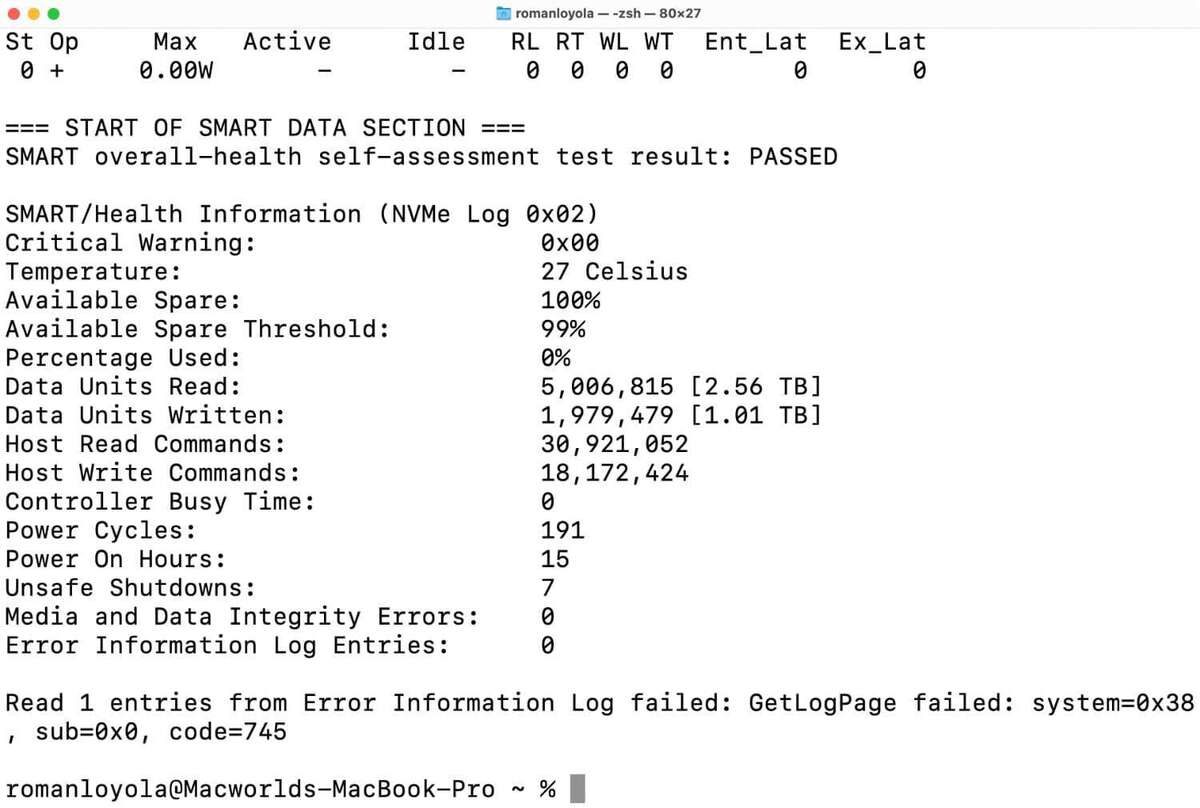
#Ssd health check mac download#
Method 3: Download a Free SSD Health Utility (Disk Drill).Method 2: Use a Paid SSD Drive Checker (DriveDx).Method 1: Check SMART Status on macOS with Disk Utility.
#Ssd health check mac mac#
But panic about M1 Mac SSD wear killing machines in less than a year are likely highly exaggerated. If you expect your usage to be RAM-intensive, and/or write a lot of data, then 16GB RAM is better than 8GB, and a large SSD is better than a small one. So yep, if you’re speccing up an M1 Mac, you’ll want to factor in SSD wear. No person in their right mind would buy a new car thinking that would cease working in five years or 50,000 miles, but that’s a common warranty. A 1 percent usage might in reality be only 0.25 percent. You can double that for a 512GB SSD.Ī drive’s SMART function generally reports usage as a percentage of the TBW rating, so you can apply this rated versus real lifespan formula to that as well. That means nearly 4 to 8 years of SSD life at the same pace with an 8GB/256GB M1 Mac. But wait…įar more likely-according to the industry scuttlebutt, my own experience, and third-party testing-is that the 256GB SSD will reach 300TBW with ease, and quite likely more. Someone writing 7.5TB per month would exceed the warranty at around 20 months, less than two years. If Apple followed common practice, the 256GB SSD in your M1 Mac would likely be rated for 150TBW. In practice, SSDs can commonly cope with four times as much wear. Second, he says than SSD vendors have to be very conservative in their wear ratings, as it leaves them on the hook for warranty claims if a drive fails before reaching its rated wear limit. Controller failures these days are virtually unknown. MacWorld’ s Jon Jacobi today provided some reassurance.įirst, he noted that very early SSDs mostly died because of problems with their controllers, rather than cell wear. But the problem likely isn’t as bad as it seems In an extreme example, an M1 Mac with 8GB RAM and 256GB SSD could hit its rated wear level in less than six months. And the smaller your SSD, the greater the wear on each cell. The less RAM you have, the more use will be made of the SSD. The most severe cases have “consumed” about 10-13% of the maximum warrantable TBW value of the SSDs (given their capacity & using values for equivalent market-available NVMe drives).

#Ssd health check mac professional#
Some more professional users of the new M1 Macbooks are experiencing extremely high drive writes over relatively short time. What rang alarm bells was when M1 Mac owners started checking their SSD wear and seeing what appeared to be alarmingly high levels after just a few months of use. The architecture also makes much freer use of the SSD, using this interchangeably with RAM to a greater extent than seen on Intel machines. This means that RAM is shared between the main processor, graphics, and neural engine as required. The M1 Mac SSD wear concernĪ large part of what makes M1 Macs so fast is that the chips use what’s known as a unified memory architecture. Since the margins between different cell states are narrower, even a small amount of wear can cause electron capacity issues that make it impossible to recall the correct state.Įach SSD manufacturer determines the number of charge cycles a cell can endure before it becomes too unreliable to read, and monitors actual cycles against this number to provide a wear rating as a percentage. Multi- and triple-level cells have multiple levels and therefore many different states that have to be read. Write to a cell too many times, and it eventually goes bad This can make the state impossible to read correctly. Every time that state is changed, the oxide layers wear down, eventually losing their ability to contain electrons. In other words, how many electrons are trapped between the oxide layers.

What a given cell’s state is, depends on the charge level. Electrons are trapped between those oxide layers. Two layers of one or another chemical mixed with oxygen. Each memory cell within an SSD has an oxide component.

It’s the act of writing to the flash memory cell that degrades it. This doesn’t apply any wear to the cell, but writing to it does, as HelpDeskGeek explains. To read a cell, the computer simply checks the voltage level. When data is written to a cell, a voltage is applied to change its state. Multi- and triple-level ones use two or three levels respectively to store two- or three-bit data. The simplest SSDs only store a single bit of information in each cell, a 0 or a 1. Solid state disks (SSDs) store information by being charged with different voltages. The issue came to light last month when M1 Mac users started sharing SSD wear rates on Twitter and the Linus Tech Tips forums … Reports had earlier suggested that some machines might hit the rated wear limits of their soldered-in SSDs in less than six months. Concerns about excessive M1 Mac SSD wear may be exaggerated, suggests a piece today.


 0 kommentar(er)
0 kommentar(er)
